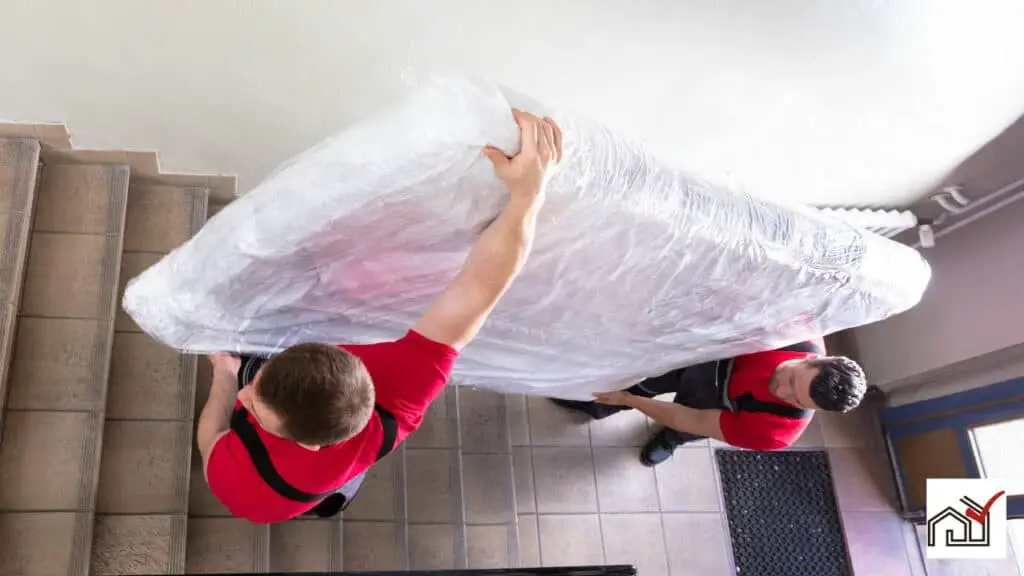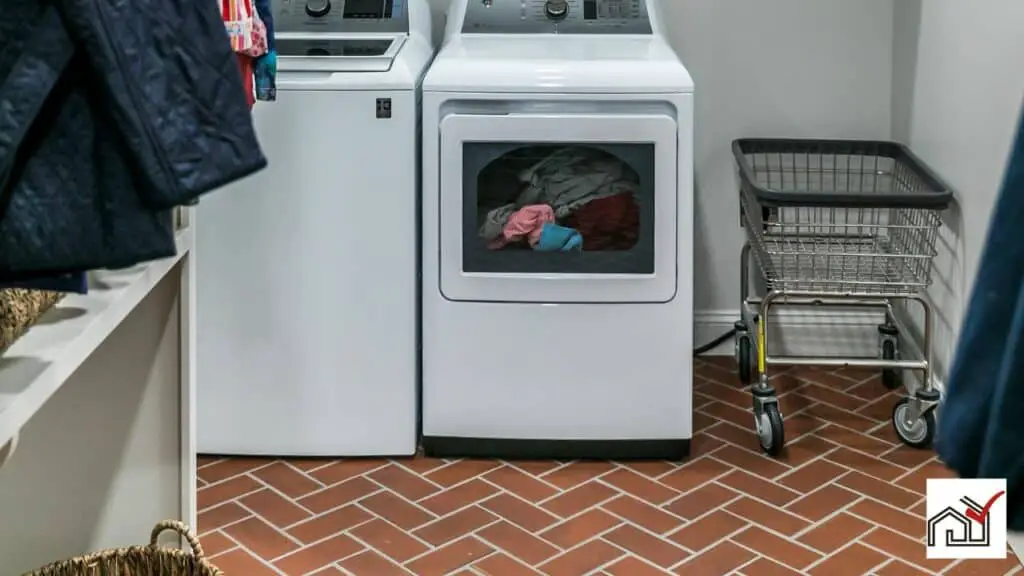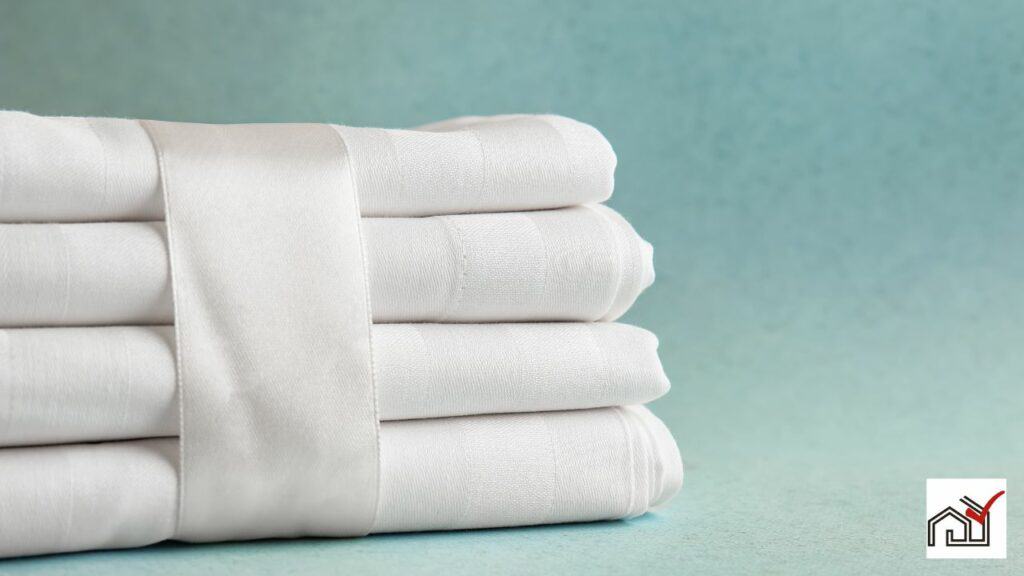When moving a mattress upstairs, it may be necessary to bend it to navigate tight spaces. The ability to bend a mattress without causing damage depends on its type and materials. Innerspring, memory foam, and latex mattresses each have different flexibilities.
Proper bending techniques should be used to protect the mattress’s structure. Let’s now cover the considerations for bending a mattress during transport, including the risks and safety measures involved.
Assessing Mattress Flexibility
When evaluating a mattress’s flexibility, it is important to look at the materials used in its making, as these affect its bending ability. Mattresses with coils and border rods are usually less flexible and may be damaged by excessive bending. Some coil mattresses are designed to bend for easier transport.
Memory foam and latex mattresses are more flexible and can be folded temporarily without damage, which is useful for moving in tight spaces. The durability of these materials can vary, so both price and quality should be considered for their ability to withstand bending.
Latex mattresses, including both natural and synthetic types, are known for their durability and flexibility. Natural latex also resists microbes and dust mites.
Understanding Different Mattress Types
Innerspring mattresses have coil springs and can sometimes bend for easier movement through tight spaces. Care should be taken when bending, especially with larger sizes.
Memory foam mattresses are flexible, conform to pressure, and are easier to transport and set up than innerspring mattresses. They should be handled carefully to avoid damage.
Latex mattresses, made from rubber tree sap, are durable and slightly flexible, useful during moving, but are generally firmer than memory foam.
Hybrid mattresses mix foam and innerspring coils, offering both support and comfort. The foam layers add some flexibility, but the coils may limit bending.
Manufacturers and retailers provide protective kits for mattresses during moves. It is important to lay mattresses flat after transport to preserve their quality.
Proper Bending Techniques
To correctly bend a mattress for movement through a narrow stairwell, first assess its flexibility, particularly for coil or innerspring mattresses. Stand the mattress on its side and gently apply pressure to test pliability. If you find that the mattress cannot be bent without damage, check if the return policy allows for returns in such cases.
When bending the mattress, do it slowly and gently to minimize stress points that could harm the internal structure. Bend the mattress only as much as needed to navigate obstacles.
For safe transport, have several people carry the mattress, spreading the weight evenly to prevent sharp folds that could damage it. Once the mattress is in place, lay it flat immediately to avoid long-term damage.
Using correct bending techniques and ensuring careful handling will help maintain the mattress’s condition while moving it through tight spaces.
Potential Risks of Bending Mattresses
Bending mattresses can damage their internal structure, causing permanent harm to metal coils and border rods, which can tear the fabric and degrade the surface. If bent during shipping or handling, a mattress might not lay flat again, impacting sleep quality. Warranties often exclude damage from bending, leaving customers to cover repair or replacement costs.
It is important to follow manufacturer guidelines for moving and installation to avoid damage. Misinformation about safe mattress handling can lead to problems and dissatisfaction; therefore, care should be taken when discussing mattress care.
Preparing for the Move
When moving a mattress to an upper floor, it’s important to consider the size of the elevator and the layout of the stairwell. If the elevator is too small, the mattress may need to be folded. An open stairwell might make it easier to move the mattress. Check that the mattress can be moved without damage before attempting to transport it.
Coil or innerspring mattresses may have hinges that make them easier to move. Test the mattress’s flexibility before moving to prevent damage. If purchasing a latex mattress, ask about the type of latex and its quality to ensure it can be bent during transport without damage.
Our store helps customers with mattress moving challenges. We offer options for easy transport and, in some cases, can ship the same day. If you need help or advice on moving your mattress, call us for assistance.
For guidance on moving your mattress, visit our store or contact our team. With the right preparation, your mattress will arrive in good condition, ready for use in its new setting.
Alternative Solutions for Tight Spaces
In small spaces where moving a traditional mattress is difficult, options like modular bed kits or split king mattress sets are useful. These solutions address issues like narrow hallways and steep stairs. Modular bed kits can be taken apart, moved through small spaces, and put back together at the destination. Purchasing these kits eliminates the worry of fitting a mattress through tight spots.
For those needing a king-sized bed, combining two twin extra-long mattresses on a king bed frame is a practical choice. This mimics a king bed’s size while being easier to move. Flexible mattresses made of memory foam or latex are also suitable as they can bend or roll without damage, preserving their quality.
Retailers may offer delivery services tailored for homes with difficult layouts. It’s worth considering these options for easier mattress delivery and setup. If necessary, hiring professional movers who are experienced and have the right tools can ensure safe mattress transport in confined spaces. Evaluate the expense of hiring professionals against the ease and assurance they offer, especially for valuable or fragile items.
Aftercare for a Bent Mattress
After you’ve moved your mattress through narrow spaces, place it flat as soon as possible to help it regain its shape and preserve its quality. Proper aftercare is essential. A flat surface will prevent lasting damage that affects comfort and support.
Consider the type of mattress you have. Memory foam and latex are more flexible, while coil or innerspring mattresses need careful handling to keep their shape. If you’re unsure about the mattress’s resilience, feel free to contact us for advice.
If you’re uncertain about handling the mattress or notice any issues once it’s in place, call us. Our customer service can help you on the purchase day and with future questions. We protect your privacy when you seek our help.
To ensure your mattress remains in good condition for years, immediate care after bending is important. With the right attention, your mattress will continue to be comfortable and supportive.





